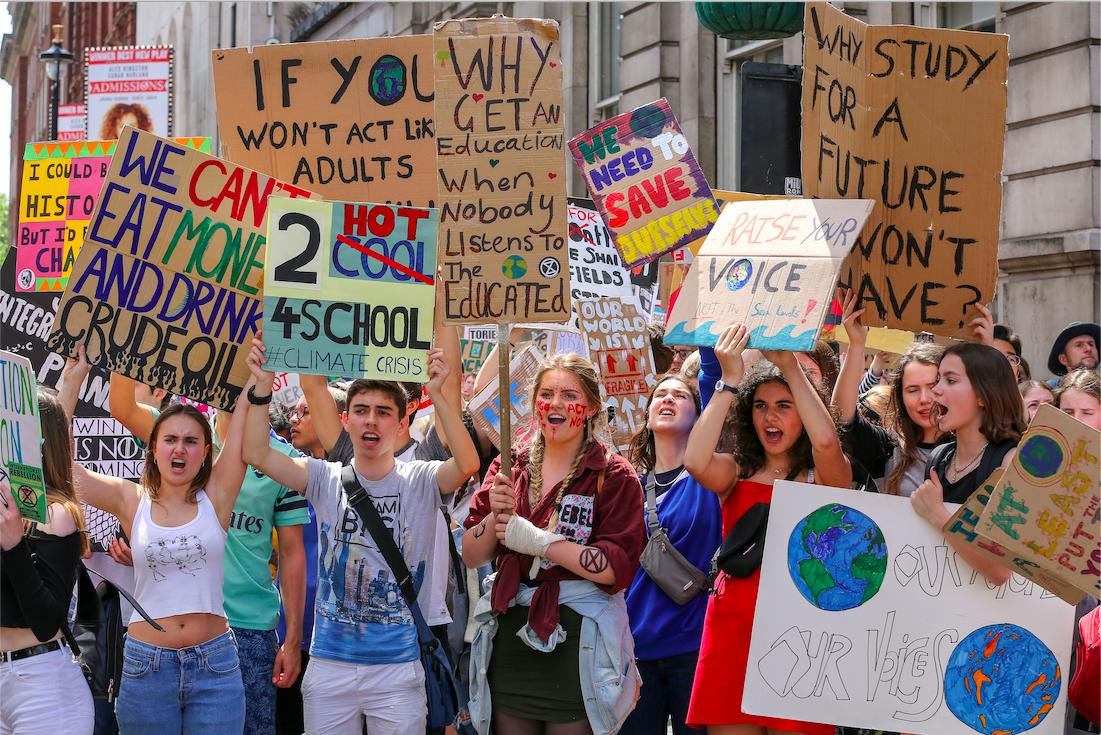
The costs and benefits of a clean economy
By Professor Tom Kompas, University of Melbourne
Business leaders, politicians and policymakers have spent years asking if we were to cut emissions, how much would it cost in lost income or Gross National Product (GDP) in Australia? How much worse off would we be?
If countries around the globe also cut emissions how badly would Australia’s exports of coal and natural gas suffer?
While once framed purely as an environmental issue, the Deputy Governor of the Reserve Bank of Australia Guy Debelle noted earlier this year that the risks that climate change poses to the Australian economy are ” first order” and have knock-on implications for macroeconomic policy.

So using recent work by Melbourne Sustainable Society Institute (MSSI) at the University of Melbourne, we have compared the cost of damages from climate change, with the cost of reducing emissions from the recent Climate Council Report for economic damages under current or continued increases in emissions.
COST OF EMISSIONS REDUCTION IS NEGLIGIBLE
We know that climate change can have potentially disastrous effects, and the list is long; pollution, heat stress and its impact on human health, falls in agricultural productivity and permanent losses in biodiversity.
As well as damage to environmental assets such as the Great Barrier Reef, sea level rise and resulting infrastructure damage, the increased likelihood of floods and bushfires, possible increased frequency and severity of tropical storms, and severe migration pressure from countries most affected by climate change are only part of the list.
But the relative costs of emissions reduction to avoid these damages, can be hard to measure in dollar terms, given our complex and uncertain future.
As a first step, we use a large dimensional global trade and climate model, an extension of other recent work, to determine the cost of meeting Australia’s minimum target of a 26 per cent reduction in emissions by 2030, compared to 2005.

We also assume that all other countries do reduce their emissions by more than double the current unconditional ‘Nationally Determined Contribution’ in the Paris Accord, or a 12 per cent reduction in emissions on average.
There are two major cost effects for Australia here; the cost of transition from fossil fuels to renewables, resulting in relative and variable price changes for energy, across all sectors, and the effect of falls in net exports of fossil fuels on national income.
For the 26 per cent target, we find only negligible effects on national income.
The total cost is only $A35.5 billion in the cumulative fall in GDP from now until 2030 in Australia – a measure much lower than previous other estimates, which range from more than $A82 billion to nearly $A300 billion, using the exact same target.
Why the difference?
One good reason, among many in our modelling, is that we use the most recent estimates on the cost of energy, what is termed the LCOE or the Levelised Cost of Energy.
The LCOE allows for a clear comparison across different technologies (solar, wind, gas, thermal coal etc), allowing for the effects of different project lifespans, capital costs, risk levels, expected rates of return and the ability to generate capacity.

COST OF RENEWABLES IS FALLING
The story here is nothing but positive.
The cost of renewables is falling very rapidly around the world and the LCOE of renewables, also falling rapidly, is already less than the cost of fossil fuels in Australia.
There will still be costs of transition to renewables, of course, especially in the transport sector, along with losses in net exports.
But projected increases in resource efficiency, an efficient emissions trading scheme and the fall in the price of renewables act much like technological change in Australia they give added output from a different energy mix of inputs, generating very little net fall in GDP over the coming decade.
What about damages from climate change under current policy and ‘business as usual’ globally?
These are estimated at $A584.5 billion in 2030 for Australia and blow out to over $A5 trillion in 2100 in the Climate Council Report.
Although not large amounts in terms of the percentage of GDP (roughly 2.5 to 4 per cent in 2100 depending on assumptions on GDP growth going forward), someone has to pay the cost.
That cost is roughly $A14,000 for every Australian in 2100, each year and every year after, or $A61,000 in the cumulative cost per person from now until 2100.
The longer we wait to act and bear any of the costs, or the more we pass on to the future, the larger this per person cost becomes.
The younger generation is right to be protesting.
However, the striking point here is that these damage measures are very limited in scope. They cover only infrastructure damage, some human health effects and losses in agricultural and labour productivity in Australia.
A great deal indeed is missing.

THE BOTTOM LINE
Do the costs of emissions reduction to 2030, the $A35.5 billion, compare to the losses in 2030 in Australia of $A584.5 billion?
Not exactly, since a 26 per cent target in Australia and the 12 per cent reduction globally will clearly miss the “less than 2 degrees warming by 2100” target, meaning there will still be profound damages from climate change.
Only part of the damages from climate change, in other words, are avoided with such a relatively mild target.
But it does give us a good idea of the order of magnitude.
The 26 per cent reduction in emissions should be relatively easy for Australia to achieve, with very little cost.
It follows that we can and should do even much better. Indeed, our preliminary modelling shows that the costs of emissions reduction are far less than the damages of inaction in all scenarios that we have examined.
Even the case of a net zero emissions target by 2050 is not only possible but desirable – the costs of emissions reduction are also far less than the avoided damages from climate change, even under this more aggressive target.
This, without even acknowledging that our measure of damages from climate change is vastly underestimated, shows that transition from fossil fuels to renewables makes sound economic sense.
_______________________________
This article has been originally published in Pursuit and it is republished here with Professor Tom Kompas’ permission.